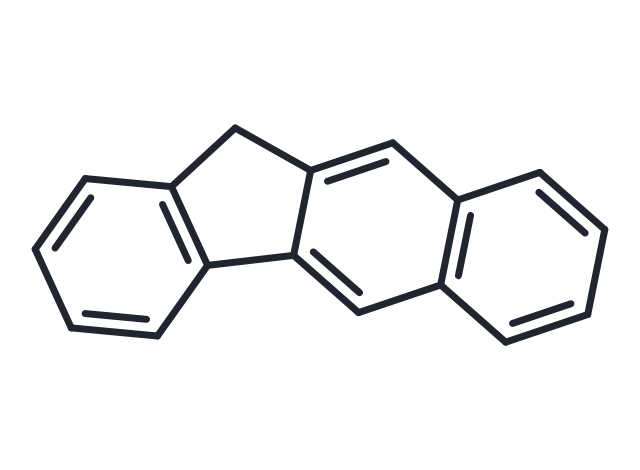Shopping Cart
- Remove All
 Your shopping cart is currently empty
Your shopping cart is currently empty
2,3-Benzofluorene (Benzo[b]fluorene) is a useful life science reagent for biochemical experiments and organic synthesis.

| Pack Size | Price | Availability | Quantity |
|---|---|---|---|
| 1 mg | $195 | In Stock | |
| 5 mg | $483 | In Stock | |
| 10 mg | $692 | In Stock | |
| 25 mg | $1,080 | In Stock |
| Description | 2,3-Benzofluorene (Benzo[b]fluorene) is a useful life science reagent for biochemical experiments and organic synthesis. |
| In vivo | In Sprague Dawley rats, oral administration of 2,3-Benzofluorene for 5 consecutive days (0-1000 mg/kg) caused dose-dependent effects. In males, increased TSH and decreased thyroxine were observed (lowest BMD: 11.8 mg/kg), while in females, increased liver weight and cholesterol were noted (lowest BMD: 1.08 mg/kg). Transcriptomic analysis revealed significant changes in liver and kidney gene expression, with the most sensitive gene showing a BMD as low as 0.96 mg/kg, indicating strong in vivo activity with higher sensitivity in female rats[1]. |
| Synonyms | Benzo[b]fluorene, 11H-Benzo[b]fluorene |
| Molecular Weight | 216.28 |
| Formula | C17H12 |
| Cas No. | 243-17-4 |
| Smiles | C=1C=CC=2C=C3C(=CC2C1)C=4C=CC=CC4C3 |
| Storage | Powder: -20°C for 3 years | In solvent: -80°C for 1 year |

Copyright © 2015-2025 TargetMol Chemicals Inc. All Rights Reserved.